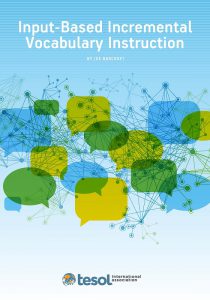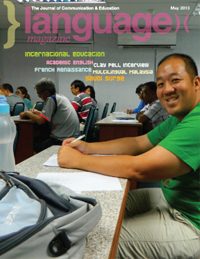After Spain’s education minister stated that he was drafting a proposal to make the teaching of Castilian Spanish obligatory in schools throughout the country, the world-famous FC Barcelona soccer team has defended the use of the Catalan language and how it is being taught in the region.
“Our language, like our team, is an element of integration which permits us to identify with our country (Catalonia),” said an FC Barcelona spokesperson. It “energetically asserts its right to use the Catalan language and the model of language immersion that has been in force in Catalonia over the last 34 years.”
Currently, there are separate Spanish classes in Catalonia’s state schools, but they are not obligatory.
The statement comes in response to separatist demonstrations in Catalonia, where many believe the region will do better if it breaks away from Spain and becomes an independent nation within the European Union.
That idea was put to the test in Catalonia’s regional parliamentary elections on Nov 25 in which the central issue was whether to hold a referendum on separating from Spain. Pro-referendum voters obtained a majority of seats in the legislature.
The proposed referendum has caused tensions with the central government which argues that Spain’s regions cannot hold individual referendums because that would be unconstitutional.
The dispute grew more heated when Spain’s Minister for Education, Culture, and Sport, Jose Ignacio Wert, said he was drafting a proposal that would ensure that Castilian was taught in schools throughout the country.
Catalonia’s regional education chief, Irene Rigau, stormed out of a meeting in Madrid saying his proposal was unacceptable.
Barcelona soccer team Captain Carles Puyol has now tweeted hashtag keywords critical of Wert. The Barcelona football team, whose motto is “more than a club,” is seen as a bastion of Catalan identity dating back to Spain’s 1936-39 civil war and the subsequent military dictatorship of Gen. Francisco Franco.
Soccer Giants Defend Catalan
Spanish Center for Harvard
Spain’s Instituto Cervantes is creating a Spanish-language center in the Faculty of Arts and Sciences at Harvard University, the goal of which is to be the international point of reference for analyzing the progress of the Spanish language in the U.S.
The largest banking group in the Eurozone, Spain’s Grupo Santander, will contribute 1 million euros ($1.3 million) to the center over the next four years.
Cervantes’ director, Victor Garcia de la Concha, said these are crucial years for the consolidation of Spanish as the second language for international communication, which means that even greater efforts must be made.
Garcia de la Concha and Harvard’s president, Drew Gilpin Faust, are scheduled to sign the accord on Friday.
The center will be headed by Francisco Moreno, professor at Spain’s University of Alcala and ex-director of the Cervantes Institutes in Sao Paulo and Chicago.
It will also act as a venue to promote cultural initiatives, conferences, and lectures, as well as showcase Cervantes Prize winners and Latino writers living in the U.S.
New Bill to Support Language Teaching at School
LAUTENBERG, HOLT INTRODUCE BILL TO SUPPORT INNOVATIVE APPROACHES TO FOREIGN LANGUAGE TEACHING
U.S. Sen. Frank R. Lautenberg (D-NJ) and Rep. Rush Holt (NJ-12) have introduced, in both the Senate and the House of Representatives, the “Foreign Language Education Partnership Program Act.” The legislation would create a new U.S. Department of Education initiative to support revolutionary classroom programs that provide carefully sequenced foreign language classes from kindergarten through high school.
“We need to give our young people the best opportunities to master foreign languages to help them thrive in this global economy. By fostering innovative programs for our students, this legislation will help close the foreign language gap among American students,” Lautenberg said. “I hope my Senate colleagues will help make our nation more secure and prosperous by joining this effort to make foreign language education a national priority.”
“Because of poor foreign language education, American companies today lose international contracts, our scientists miss important opportunities for collaboration, and clues critical to our national security go untranslated,” Holt said. “We need to improve dramatically how our children learn languages by establishing a foundation at the earliest ages and building on it through high school, college, and beyond.”
According to studies funded by the Department of Education, only 30 percent of American high school students are enrolled in foreign language classes, and only 25 percent of American elementary schools even offer foreign languages. To address these problems, the bill would create a new K-12/higher education foreign language education partnership program. It would provide up to $50 million in annual funding for model programs of sequenced foreign language instruction from K-12, with the goal of graduating high school students with an advanced level of proficiency. Any foreign language is eligible, but the Secretary of Education may establish priorities on languages critical to national needs.
Information on successful programs and practices would be widely disseminated, with a goal of encouraging school systems nationwide to adopt similar approaches.
The bill introduced in the House of Representatives by Rep. Holt will be referred to the House Subcommittee on Early Childhood, Elementary, and Secondary Education, of which Holt is a member. The House bill is cosponsored by Reps. Jim McDermott (WA-7), Jared Polis (CO-2), John Tierney (MA-6), Jan Schakowsky (IL-9), James McGovern (MA-2), and David Price (NC-4).
Interview with Clay Pell

The nation’s new language czar speaks with Language Magazine
Last month, the Department of Education’s Office of Postsecondary Education announced the appointment of a new Deputy Assistant Secretary for International and Foreign Language Education — Clay Pell, the grandson of former senator Claiborne Pell, after whom the Pell Grant program is named.
Pell comes from the White House, where he served as director for strategic planning on the National Security Staff and helped advance President Obama’s key national security priorities.
For the complete story, click here.
Acclimatizing Saudi Students
Susan Matson offers context and suggestions for helping Saudi Arabian students adjust to the Western educational setting
Although 145,000 Saudi students have enrolled in U.S. intensive English programs and universities since the advent of the King Abdullah scholarship program in 2005, some institutions are still experiencing “the Saudi wave” for the first time as these students learn of smaller and more out-of-the-way educational opportunities over time. At 2013 TESOL conference in Dallas, for example, some U.S. school administrators shared surprise and dismay at the related challenges. Some talked about the adjustments needed by first-time teachers of Saudi nationals, and others commented on the challenges experienced by the Saudi newcomers themselves.
For the complete story, click here.
Coaxing Students Down Under

Kristal Bivona admires Australia’s initiatives to attract international students
This year, Australia is rolling out various initiatives intended to increase the number of international students at Australian universities. The initiatives cut across different sectors, but they all aim to facilitate university study. Australia is paying special attention to Asian countries, as the vast majority of international students in Oz come from around Asia.
A Smarter Australia
Universities Australia, a peak body representing 39 Australian universities in the public interest both nationally and internationally, released a four-year plan for revolutionizing higher education in order to improve prospects for Australia’s future.
The plan, A Smarter Australia: An Agenda for Australian Higher Education 2013-2016, addresses four pressing issues facing Australia: the prevalence of digital technologies; increasing competition from Asian countries and globalization; the need for economic and industrial diversification and renewal; and the need to curb declining national production.
The crux of A Smarter Australia’s agenda is forging a partnership between the government and the university sector to create policy initiatives that will facilitate increasing Australia’s university participation, developing a more globally engaged university sector, creating an innovative research system that drives economic and social progress, and increasing investment.
“With 88 percent of people encouraging their children to obtain a university education, we want to ensure that our universities are equipped to turn this aspiration into graduation,” said Professor Glyn Davis, chair of Universities Australia.
“Our vision is for a smarter Australia — one that is prosperous, diverse, and proud of its inventiveness. We believe that by following this agenda, our universities can make this vision a reality.”
Reaching Out to China
Australia’s Prime Minister, Julia Gillard, announced a new campaign to promote Australian trade, investment, and tourism opportunities in the Chinese market.
In a statement, Gillard made mention of Australia Week in China, planned to take place in Shanghai in 2014. The campaign is meant to boost Australia’s reputation as an ideal tourism destination and valuable trade and investment partner. The Australian government is investing approximately 1.75 million Australian dollars in the campaign.
China is currently Australia’s biggest trading partner and is responsible for sending more tourists to Australia than any other country.
Education as Trade
The Australian Trade Commission, Austrade, has launched a new section of its website dedicated to international education. The new web pages will make navigating the site easier for education providers. The redesigned website boasts an interactive world map with market profiles and detailed demographic information about the international student population compiled by Australia Education International (AEI).
AEI’s data shows that in 2012, although there were over 515,000 international students on Australian student visas, numbers were down from 2011. Not surprisingly, the highest international student populations come from China (149,758), India (54,396), Korea (27,719), Vietnam (22,551), and Malaysia (21,587). The only non-Asian country ranking in the top ten is Brazil, with 15,092 international students in 2012.
With extra attention on Australian education for international students, it’s possible that Australia’s 2013 numbers will be back up from the dip last year. Early reports from 2013 show an increase in higher-education students turning up for their first semester. Streamlining of the student visa process is credited with the increase.
A Crisis in Indonesian Language Teaching
While Indonesian is Australia’s top critical language, language training in Indonesian is not up to par. While Australia hasn’t been able to successfully address this issue, the Indonesian government has offered a plan.
“We can give some brief training to our students here — those taking masters and doctoral programs (at Australian universities) — and they can be deployed as language instructors on a temporary basis,” said Nadjib Riphat Kesoema, Indonesia’s ambassador to Australia.
Over the last decade, enrollment in Indonesian courses has dropped nearly 40%, and according to a 2010 report, Indonesian courses had a 99% dropout rate.
The ambassador’s offer was well received by university professors, but not quite as enthusiastically as it was by the Department of Foreign Affairs: “The idea of using Indonesian post-grad students in Australia to teach Indonesian in Australian schools is one of several ideas canvassed,” a spokesman for the Department of Foreign Affairs and Trade commented.
Whether or not Australia decides to take Indonesia up on its offer, the proposal offers an interesting model that might be of interest to other countries aiming to promote language and culture abroad.
Kristal Bivona is assistant editor at Language Magazine.
Dept of Ed Partners with NCFL to Encourage Family Involvement
The National Center for Family Literacy (NCFL) and the U.S. Department of Education today announced a partnership to advance family engagement in education across the country.
During the yearlong partnership, the Department and NCFL will jointly develop and implement strategies to raise the awareness and understanding of effective family and community engagement in education, including how teachers and families can better collaborate to improve student engagement and learning. This will include:
- Convening community discussions on family engagement with educators, families and community leaders across the country.
- Identifying and compiling promising practices and program examples for effective family engagement in education, so schools can employ leading practices that work.
- Gathering feedback on family engagement frameworks from educators, parents, advocates, and others in the education community.
- Developing and disseminating resource materials to support family and community engagement in education. An example includes NCFL’s Wonderopolis, an award-winning online learning community that engages classrooms and families in the wonder of discovery.
The partnership will extend the Department of Education’s efforts on family engagement and NCFL’s track record of more than 20 years of providing tools and resources for educators and parents to create engaging lifelong learning opportunities for the entire family.
“Increasing family engagement is key to improving schools and neighborhoods across the country. Parents who play an active role in their children’s education – at home, at school and in the community – have a tremendous impact on factors like school readiness, motivation to learn, and study skills, as well as on high school graduation rates and college preparedness,” said U.S. Secretary of Education Arne Duncan. “We hope this partnership with NCFL will provide much needed support for efforts that will increase family and community engagement in local schools and prepare our children for lifelong success.”
“We see too many communities struggling with how to create meaningful and effective family engagement initiatives,” said Sharon Darling, NCFL president & founder. “Children need to learn in ways that are engaging and relevant to real-life situations, but educators and families tell us they need support to make this happen.
“Simultaneously, the nation’s policy-makers are awakening to the potential of learning beyond the school walls. Through years of experience and talking with parents across the country, we have the recipe for successful family engagement.”
Although no specific provisions have been earmarked for families speaking languages other than English, NCFL programs include the Toyota Family Literacy Program which serves English as a Second Language (ESL) families with children in elementary school, and the Family and Child Education program which serves Native American families with children from birth to grade three and is supported by the Bureau of Indian Education.
Recently, Carolyn Blocker, an educator from Long Beach, California with nearly 25 years of experience, received the NCFL’s 2013 Toyota Teacher of the Year award. Blocker has worked for the past seven years to improve the lives of more than 300 families as a parent education teacher at the Long Beach School for Adults. Blocker and her community’s participants boast numerous achievements, including significant parent engagement and a 90 percent retention of families, despite facing hurdles ranging from economic challenges to language barriers.
Mary Ellen Lesniak, an English as a Second Language adult and family coordinator at the Tolton Center in Chicago, was named The Toyota Teacher of the Year runner-up. Lesniak will receive a $2,500 grant, which she plans to use to purchase iPads for her classroom, as well as a scholarship to attend the conference.
Multilingual Malaysia
Gordon Berrick sees Malaysia’s language skills leading to its success
The classroom filled almost imperceptibly, and by the scheduled 7:30 p.m, start, 30 students were ready to begin their twelve-week course in the Thai language in a meeting room at the YMCA in Penang, Malaysia.
Combining both humble grace and engaging discourse, Professor Prim quickly brought the class to their task at hand, reading out a number of Thai words and phrases while introducing Thai culture to the classroom full of both men and women ranging in age from 18 to 65.
For the complete story, click here.
May 2013
Indigenous Languages
Nunavut Official Languages Act and preserving Nahuatl
Multilingual Malaysia
Gordon Berrick sees Malaysia’s language skills leading to its success
Interview with Clay Pell
The nation’s new language czar speaks with Language Magazine
Coaxing Students Down Under
Kristal Bivona admires Australia’s initiatives to attract international students
Acquiring Academic Literacy from the Inside
Lina Sun breaks down the barriers to academic English from the student’s perspective
La Renaissance Mapping the resurgence of French in America
Acclimatizing Saudi Students
Susan Matson offers context and suggestions for helping Saudi Arabian students adjust to the Western educational setting
Keys to the Kingdom
Mark D. Rentz offers success strategies for Saudi scholarship students on intensive English programs
Last Writes Richard Lederer brings English from Olympus
Way with Words
 Way with Words
Way with Words
Input-Based Incremental Vocabulary Instruction by Joe Barcroft
TESOL International Association 123 pages ISBN 193-1185752
Joe Barcroft premises his new book, Input-Based Incremental Vocabulary Instruction, by pointing out that while the subject of grammar acquisition has been the centerpiece of second-language acquisition research, newer studies suggest that vocabulary has a central role in language acquisition. Therefore, Barcroft posits that vocabulary should also be central in the development of programs and in the teaching of second languages. He writes, “The purpose of this book is to explain and exemplify an approach to L2 vocabulary instruction that relies heavily on concrete research findings and the theoretical advances that they support.” The explanations and examples are intended to give teachers the tools they need to create their own activities, appropriate for their students, using input-based incremental vocabulary instruction.
The first chapter, “Getting Started with Five Questions,” fosters the reader’s self-assessment of his or her current vocabulary instruction style and brainstorming on how to implement an input-based incremental (IBI) approach. In the next chapter, “Ten Principles of Effective Vocabulary Instruction,” Barcroft outlines ten principles to IBI vocabulary instruction and then thoroughly discusses each principle, looking at its rationale, research support, and theoretical grounding. This chapter answers theoretical questions of how and why, while preserving a more detailed description of how teachers can use an IBI approach in the classroom for later chapters.
Chapter Three, “Checklist for Designing and Implementing Vocabulary Lessons,” is like a how-to guide for creating and executing IBI vocabulary lessons. The seven-item checklist includes deciding on target vocabulary and materials; ensuring that activities are meaningful, educational, and interactive; using cultural and historical information if appropriate; presenting the target vocabulary repeatedly in the input; increasing difficulty of tasks gradually over time; incorporating a number of the principles from Chapter Two; and including directly applicable research findings, which demands “an ongoing consideration of the L2 vocabulary research literature.” The chapter offers a sample lesson and concludes with guidelines for creating vocabulary lessons.
Chapters Four and Five, both entitled “Lessons for Your Classroom,” have a total of ten lessons that teachers can use or adapt for their own classrooms. All ten lessons use the IBI approach independently. Chapter Four’s lessons use multiple sources of input, while Chapter Five focuses on reading as a primary source of input.
The final chapter, Chapter Six, shows how the IBI approach can be used to supplement existing materials. Barcroft recommends supplementing whenever “new vocabulary is (a) not presented in the input with sufficient repetition, (b) not presented using meaning-bearing and sufficiently comprehensible input, and (c) not treated in a manner that respects the incremental nature of vocabulary learning.”
Input-Based Incremental Vocabulary Instruction encourages readers to assess their own methods for teaching vocabulary and gives them tools for how to make their vocabulary lessons more effective using the IBI approach. The book is well-organized, tightly written, and to the point. This book would be a good addition to the reading list of a professional development course, or an excellent tool for language teachers who want to implement this cutting-edge research into their courses and upgrade their vocabulary lessons.
Teachers who are not comfortable reading theory or research might face difficulties in trying to use this book. Because it focuses on a newer approach that goes against long-standing approaches that center on output, Barcroft uses numerous research studies and theories to support the IBI approach to convert skeptics. Teachers who are comfortable reading theory will be rewarded with a book that successfully bridges the gap between research on the IBI approach and its practical implementation in the classroom.
Kristal Bivona is assistant editor at Language Magazine.





